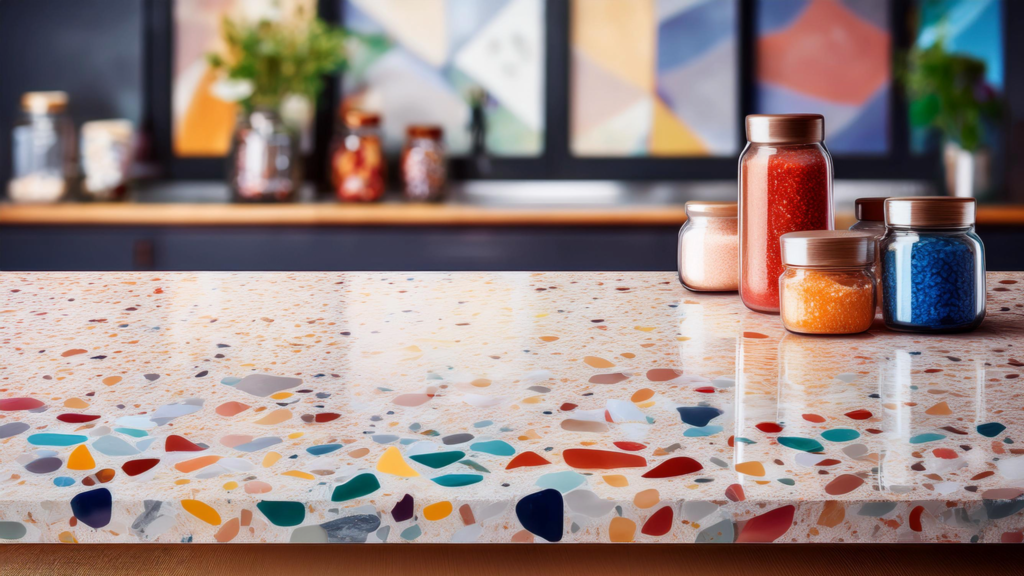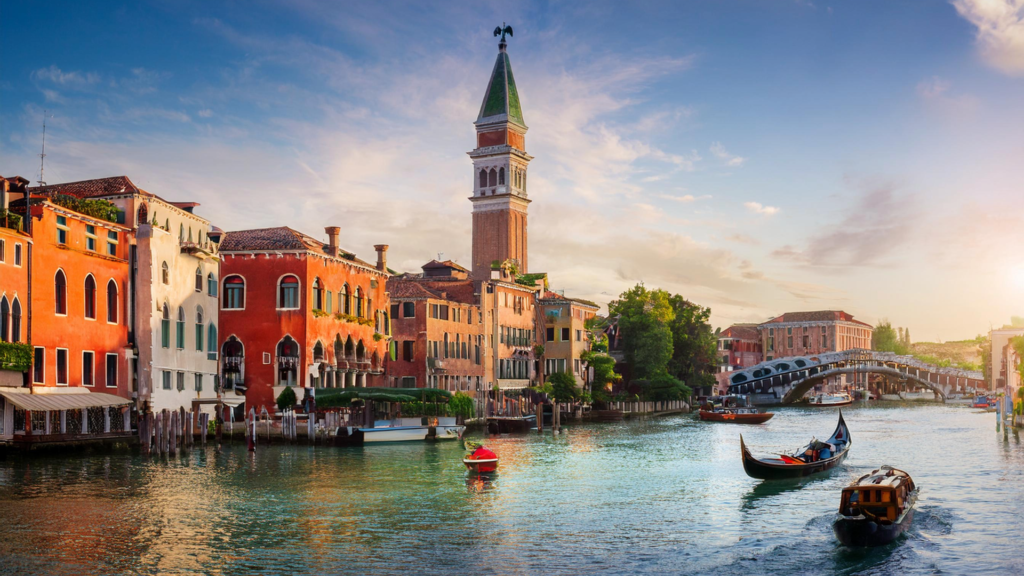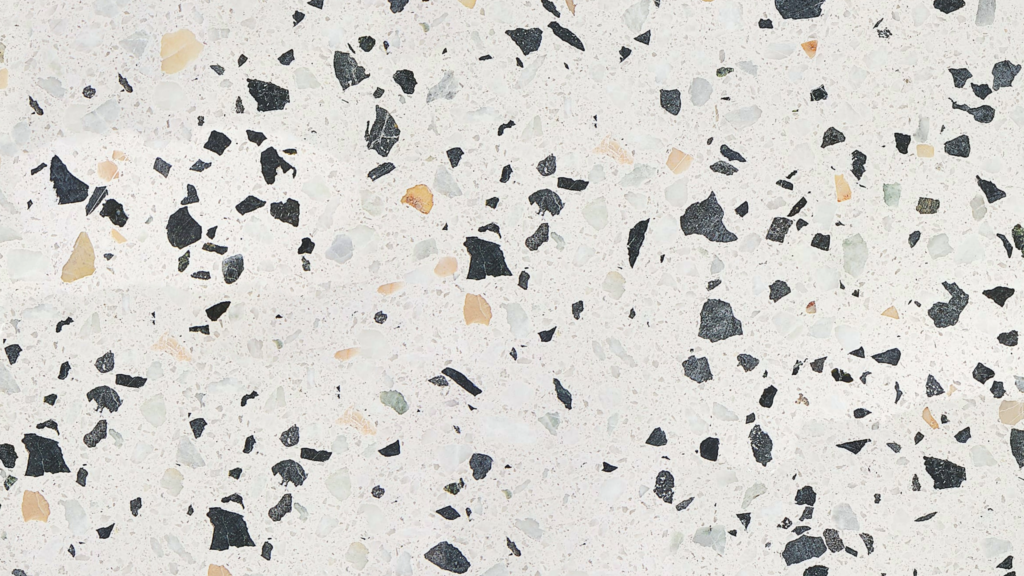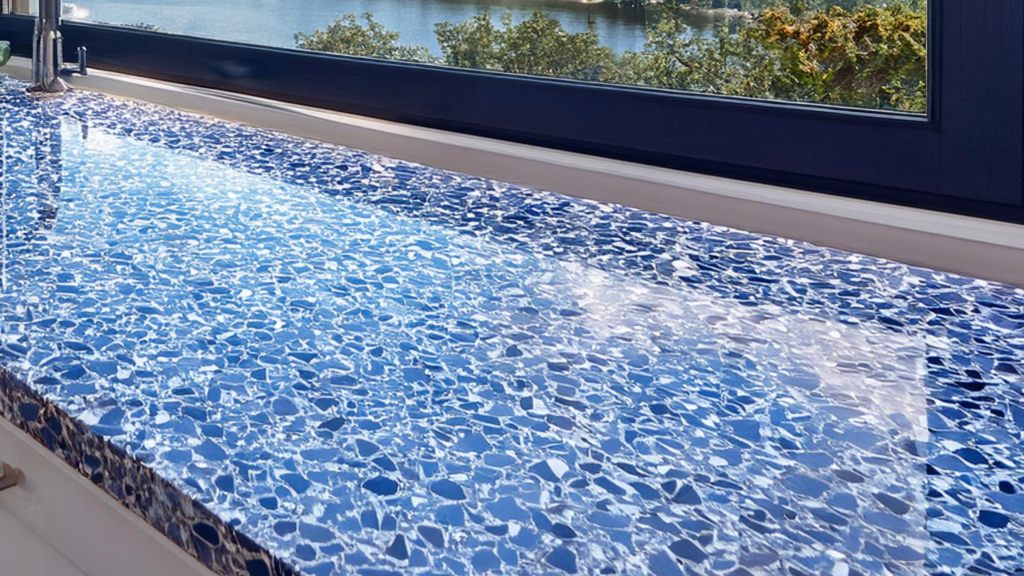Terrazzo is a captivating and versatile flooring material with a rich history and a wide range of applications. Originating from ancient times, terrazzo has evolved into a modern architectural marvel, combining beauty, durability, and practicality.
In this exploration of terrazzo, we will delve into its history, composition, advantages, applications, and contemporary uses.

History
Terrazzo’s origins can be traced back to ancient civilizations. The earliest known use of terrazzo dates back to the Egyptians, who used a similar technique in their mosaics. However, the material truly began to take shape in Venice, Italy, during the 15th century. Venetian workers, utilizing leftover marble chips from larger stone projects, combined these chips with a cementitious binder. This innovative approach not only reduced waste but also created a visually striking surface. Over time, terrazzo gained popularity across Europe and eventually made its way to other parts of the world.


Composition and Manufacturing
Terrazzo consists of a mixture of marble, quartz, granite, or glass chips embedded in a cement or resin matrix. The traditional terrazzo is made with a cementitious binder, while modern variations use epoxy or polymer-based resins. The composition of terrazzo allows for a high degree of customization, as the size, color, and type of aggregate can be tailored to achieve various aesthetic effects.

Traditional Terrazzo
In traditional terrazzo, marble or granite chips are mixed with a cementitious binder. After the mixture is poured and set, it is ground down to reveal the aggregate. This process is followed by polishing to achieve a smooth, glossy finish. The grinding and polishing steps are crucial as they enhance the visual appeal of the aggregate and ensure a durable surface.
Modern Terrazzo
Modern terrazzo often uses epoxy or polymer resins instead of cementitious binders. This type of terrazzo is known for its versatility and ability to incorporate a broader range of materials, including recycled glass and various types of stones. The use of resins also allows for quicker installation and a wider variety of colors and patterns.

Advantages of Terrazzo
Terrazzo offers strong advantages, making it a popular choice for both residential and commercial applications.
Durability
One of terrazzo’s most significant advantages is its durability. Terrazzo surfaces are highly resistant to wear and tear, making them ideal for high-traffic areas. The material is also resistant to stains, scratches, and moisture, contributing to its longevity.

Low Maintenance
Terrazzo is relatively easy to maintain. Regular sweeping and occasional mopping with a pH-neutral cleaner are usually sufficient to keep the surface in good condition. The polished surface of terrazzo also helps to repel dirt and grime.
Aesthetic Flexibility
Terrazzo provides a high degree of aesthetic flexibility. The material can be customized with different colors, patterns, and aggregates, allowing designers to create unique and visually appealing surfaces. The ability to incorporate various types of stones and glass can result in stunning, one-of-a-kind designs.

Sustainability
In recent years, sustainability has become a significant focus in the design and construction industries. Terrazzo aligns well with sustainable practices, especially when recycled materials are used in its production. Recycled glass and reclaimed stone chips can be incorporated into the terrazzo mix, reducing waste and promoting environmental responsibility.
Applications
Terrazzo is used in a variety of settings, from residential homes to commercial spaces, due to its versatility and aesthetic appeal.
Residential
In residential settings, terrazzo can be used for flooring, countertops, and even wall cladding. Its durability makes it suitable for areas with heavy foot traffic, while its aesthetic versatility allows homeowners to create customized looks. Terrazzo countertops, for instance, offer a unique and stylish alternative to traditional materials like granite or quartz.

Commercial
In commercial spaces, terrazzo is favored for its durability and low maintenance requirements. It is commonly used in high-traffic areas such as airports, shopping malls, and office buildings. The ability to create intricate patterns and designs makes terrazzo an attractive option for creating memorable and visually appealing commercial environments.
Institutional
Terrazzo is also popular in institutional settings, including schools, hospitals, and government buildings. Its resilience to heavy use and ease of cleaning make it a practical choice for these environments. Additionally, terrazzo’s ability to contribute to acoustic comfort and its low allergen properties are beneficial in such settings.
Contemporary Trends
In recent years, terrazzo has experienced a resurgence in popularity, driven by a renewed interest in vintage and artisanal materials. Modern terrazzo designs often feature bold patterns and vibrant colors, reflecting contemporary design trends. Advances in technology have also expanded the possibilities for terrazzo, allowing for more intricate designs and customization.

Eco-Friendly Innovations
Sustainability continues to be a key factor in terrazzo’s modern evolution. Eco-friendly terrazzo options, which incorporate recycled materials and low-VOC resins, are gaining traction. These innovations align with broader trends in the design and construction industries toward greener, more sustainable practices.
Integration with Other Materials
Contemporary terrazzo designs often incorporate other materials, such as wood or metal, to create unique contrasts and textures. The combination of terrazzo with different elements allows for innovative design solutions and enhanced aesthetic appeal.
Terrazzo is a material with a rich history and a bright future. Its origins in ancient civilizations and its evolution through centuries reflect its enduring appeal and versatility. With its durable, low-maintenance properties and aesthetic flexibility, terrazzo remains a popular choice for a wide range of applications. As modern design trends continue to evolve, terrazzo’s ability to adapt and integrate with other materials ensures that it will remain a relevant and attractive option for years to come. Whether used in residential, commercial, or institutional settings, terrazzo offers a unique blend of beauty and functionality, making it a timeless and versatile material.